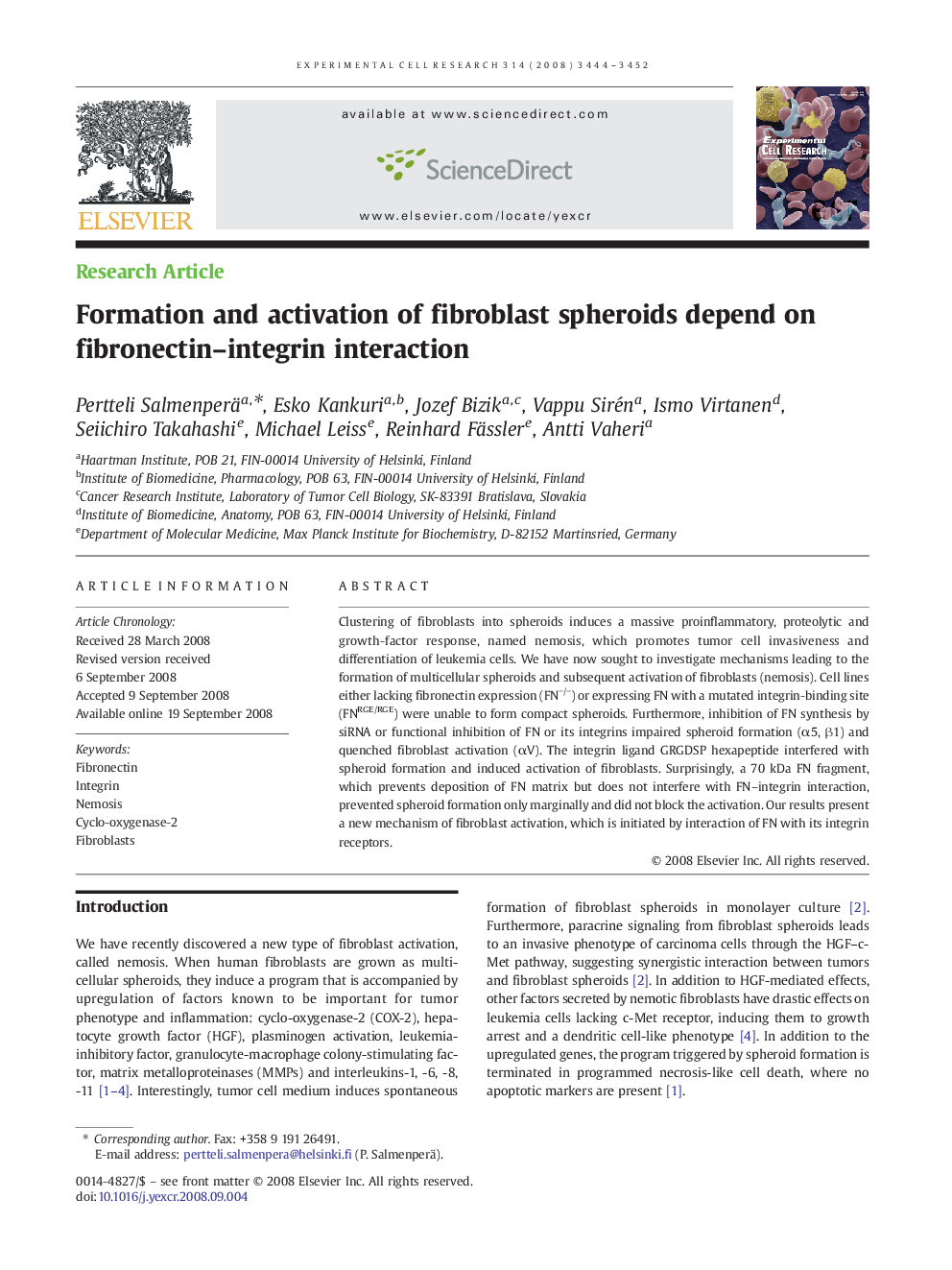| Article ID | Journal | Published Year | Pages | File Type |
|---|---|---|---|---|
| 2132794 | Experimental Cell Research | 2008 | 9 Pages |
Clustering of fibroblasts into spheroids induces a massive proinflammatory, proteolytic and growth-factor response, named nemosis, which promotes tumor cell invasiveness and differentiation of leukemia cells. We have now sought to investigate mechanisms leading to the formation of multicellular spheroids and subsequent activation of fibroblasts (nemosis). Cell lines either lacking fibronectin expression (FN−/−) or expressing FN with a mutated integrin-binding site (FNRGE/RGE) were unable to form compact spheroids. Furthermore, inhibition of FN synthesis by siRNA or functional inhibition of FN or its integrins impaired spheroid formation (α5, β1) and quenched fibroblast activation (αV). The integrin ligand GRGDSP hexapeptide interfered with spheroid formation and induced activation of fibroblasts. Surprisingly, a 70 kDa FN fragment, which prevents deposition of FN matrix but does not interfere with FN–integrin interaction, prevented spheroid formation only marginally and did not block the activation. Our results present a new mechanism of fibroblast activation, which is initiated by interaction of FN with its integrin receptors.
